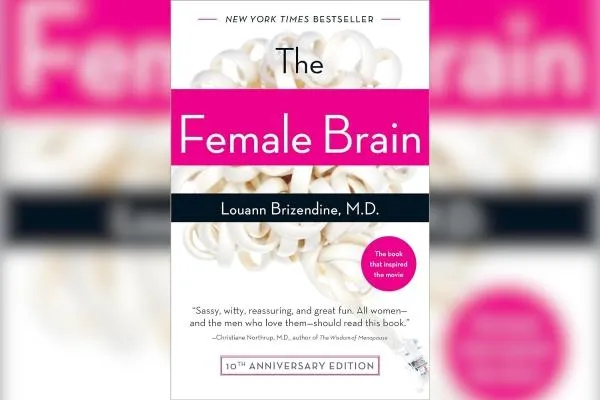
Book Review: The Female Brain
The Female Brain: A Deep Dive into the Science of Women’s Neurobiology
Dr. Louann Brizendine, a renowned neurobiologist and practicing psychiatrist, offers an enlightening and comprehensive exploration of the female brain in her book aptly named, The Female Brain. She successfully distills dozens of complex neurobiological concepts and scientific studies into an accessible and engaging narrative, making the science behind the female brain both easy to understand and fun to learn about. With a background in neuropsychology myself, I found this book to be an invaluable resource, offering fascinating insights into the inner workings of the female brain.
The Connection Between Gender and Energy
Though both genders possess both masculine and feminine energy, women typically display more feminine traits and men more masculine ones. This dynamic is often misunderstood, conflating the physical concept of gender with the spiritual construct of energy. This book is the first resource I've come across that explains why women tend to exhibit more feminine personality traits, providing scientific explanations to behaviors that are often described in very abstract terms by other authors.
The Role of Hormones, Genetics, and Evolution in Shaping the Female Brain
Dr. Brizendine delves into the various factors that impact the female brain, such as hormones, genetics, environmental influences, and evolutionary biology. She explores how these factors affect various aspects of a woman’s life, including her:
Desire for sex and love
Communication style
Heartache and emotional responses
Memory and cognitive abilities
The book covers every significant developmental stage of a woman’s life, from in-utero to menopause, showing how her brain evolves multiple times throughout her lifetime. While the focus is on the female brain, Dr. Brizendine often compares it to the male brain, making the book valuable and relevant to all.
Women and the Struggle Between Career and Motherhood
Dr. Louann Brizendine not only educates readers on the neurobiological differences between men and women, but she also critiques how society often operates in ways that clash with the female brain’s unique operating system.
For example, she explores the struggle modern women face in balancing career and motherhood. She points out that women today often juggle a "mommy brain" while still entrenched in high-stress careers, leading to constant state of tug-of-war. What is "mommy brain," you ask? You may not have known that a woman's brain (and, therefore, cognitive functioning) starts to shrink six months into her pregnancy and doesn’t fully return to its pre-pregnancy state until six months postpartum. But you probably do know that, at least in the U.S., many women return to work sooner than six months postpartum—before their brain and body have fully recovered. As Dr. Brizendine puts it:
Our modern challenge is to help society better support our natural female abilities and needs...One of the great mysteries of our lives is why we as women are so devoted to this current social contract, which often operates against the natural wiring of our female brains and biological reality.
Her insight highlights the conflict between societal expectations and women’s natural biological rhythms, calling for changes to better align with women’s unique needs.
Fascinating Facts About the Female Brain You Might Not Know
I could go on for forever about how much I enjoyed this book, but I'll limit myself to these fun facts about the female brain that might surprise you:
Eye Contact and Emotional Expression: In the first three months of life, baby girls' skills in eye contact and mutual facial gazing increase by over 400%, while boys' facial gazing skills remain the same. Girls are born better at reading faces and hearing emotional tones in the voice.
Verbal Skills: Women, on average, talk and listen much more than men. Girls typically speak 2-3 times more words per day than boys and develop their vocabulary much faster, doubling or tripling the number of words by age 24 months.
Depression and Anxiety: While both boys and girls have the same risk of depression before puberty, by age 15, girls are twice as likely to suffer from depression. Women are also 40 times more likely to experience anxiety, and they are three times more likely to suffer from seasonal affective disorder (SAD).
Hormonal Impact on Brain Development: Between the ages of 8 and 14, a girl’s estrogen levels increase 10-20 times, while her testosterone levels rise only five times. In contrast, boys experience a 25-fold increase in testosterone during puberty, leading to a stronger sex drive than girls at the same age.
Brain Changes During Menstruation: In menstruating women, the female brain changes slightly every day. During the first two weeks of the menstrual cycle, neural connections in the hippocampus (responsible for memory and emotion) grow by 25%.
Sleep Changes Postpartum: New mothers lose an average of 700 hours of sleep in the first year postpartum.
Bonding with Baby: New mothers can recognize their baby’s smell with about 90% accuracy, and men’s testosterone levels drop by a third after the birth of their child, while their estrogen levels rise to help them emotionally bond with their offspring.
Emotional Responses: Women use both sides of their brain to respond to emotional experiences, while men typically use only one side. This difference is why women often remember emotional events—like first dates or important arguments—more vividly and for longer periods.
A Must-Read for Anyone Interested in Neuroscience and Gender Differences
The Female Brain is a book I will return to time and time again. Dr. Brizendine’s ability to blend scientific facts with personal anecdotes makes this book stand out in the fields of neuropsychology and gender studies. Whether you are a man or a woman, this book offers priceless insights into the female brain and behavior, making it a must-read for anyone interested in understanding the neurobiological underpinnings of the female experience.
I highly recommend this book and look forward to reading Dr. Brizendine’s counterpart, The Male Brain.
Are you ready to join the conversation?
At The Intimate Instinct, we explore the complexities of sexuality, intimacy, and relationships through the psychological lens of masculinity & femininity and the physiological lens of hormones and neurotransmitters—all with the goal of teaching you practical insights to deepen your relationships. If you’re curious about these topics, and about becoming the best individual and partner that you can be, consider joining our women’s group. We gather online, weekly, as a small group to have thought-provoking discussions, share stories, and connect with one another.
👉 We review applications on a rolling basis—new cohorts begin approximately every three months. There is no cost or commitment to apply and once you enroll, you have 20 days to request a full refund if you're not satisfied. So what are you waiting for?! Apply now to join the conversation!
